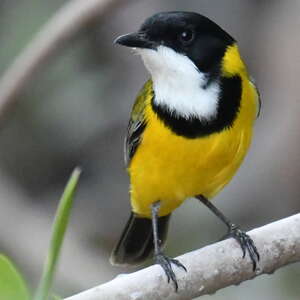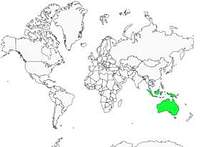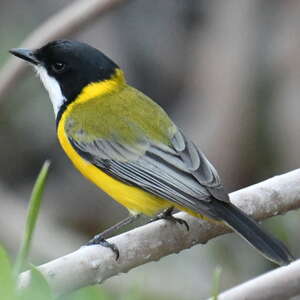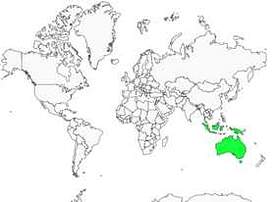Mangrove Golden Whistler
Pachycephala melanura - Siffleur à queue noire
Identification
Subspecific information 6 subspecies
- Pachycephala melanura melanura (nw Australia)
- Pachycephala melanura dammeriana ()
- Pachycephala melanura dahli (Bismarck Arch. and se New Guinea)
- Pachycephala melanura spinicaudus (s New Guinea and islands in the Torres Strait)
- Pachycephala melanura violetae (n Australia)
- Pachycephala melanura robusta (n Australia)
Foreign names
- Siffleur à queue noire,
- Silbador colinegro,
- assobiadeira-dos-mangais-australiana,
- Mangrovedickkopf,
- mangrove légyvadász,
- Zwartstaartfluiter,
- Zufolatore codanera,
- svartstjärtad visslare,
- Svarthaleplystrer,
- hlaváčik čiernochvostý,
- pištec pobřežní,
- Mørkhalet Fløjter,
- mangrovekultaviheltäjä,
- xiuladora dels manglars,
- fletówka obrożna,
- Мангровый свистун,
- Kancilan ekor-hitam,
- キンイロモズヒタキ,
- 黑尾啸鹟,
- svartstjärtad visslare,
- 黑尾嘯鶲,
Habitat
Forest : Subtropical/Tropical Dry, Subtropical/Tropical Moist Lowland, Subtropical/Tropical Mangrove Vegetation Above High Tide Level ; Shrubland : Subtropical/Tropical Dry, Subtropical/Tropical Moist ; Marine Intertidal : Salt Marshes (Emergent Grasses) ; Marine Coastal/Supratidal : Coastal Freshwater Lakes ; Artificial/Terrestrial : Subtropical/Tropical Heavily Degraded Former Forest
Threats - protection
IUCN conservation status
Extinct
Threatened
Least
concern
concern
Extinc
in the Wild
in the Wild
Near
threatened
threatened
Not
evaluated
evaluated
EX
EW
CR
EN
VU
NT
LC
NE
Other sources of interest
- Accipitriformes
- Aegotheliformes
- Anseriformes
- Apodiformes
- Apterygiformes
- Bucerotiformes
- Caprimulgiformes
- Cariamiformes
- Casuariiformes
- Charadriiformes
- Ciconiiformes
- Coliiformes
- Columbiformes
- Coraciiformes
- Cuculiformes
- Eurypygiformes
- Falconiformes
- Galliformes
- Gaviiformes
- Gruiformes
- Leptosomiformes
- Mesitornithiformes
- Musophagiformes
- Nyctibiiformes
- Opisthocomiformes
- Otidiformes
- Passeriformes
- Pelecaniformes
- Phaethontiformes
- Phoenicopteriformes
- Piciformes
- Podargiformes
- Podicipediformes
- Procellariiformes
- Psittaciformes
- Pterocliformes
- Rheiformes
- Sphenisciformes
- Steatornithiformes
- Strigiformes
- Struthioniformes
- Suliformes
- Tinamiformes
- Trogoniformes





